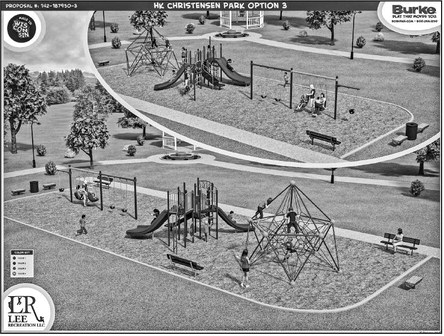Schindler takes wind turbine fight to Marathon County board


Clark County supervisor Fred Schindler last week alerted Marathon County officials to the potential dangers of industrial wind turbines going up in several townships on the western end of the county.
Speaking to the Environmental Resources Committee at its April 4 meeting, Schindler told supervisors that three to four townships in Clark County and “hopefully four to six” townships in Marathon County are looking to develop a “block ordinance” that would regulate wind turbines beyond what the state currently does.
Schindler, who lives in Curtiss, said Clark County is already working with Eau Claire and Columbia counties on the wind farm issue and would like to also reach out to Marathon County, for the “health, safety and well-being of township residents.” The biggest concern, according to Schindler, is that the state of Wisconsin has not changed its setback for wind turbines since 2012, even though the turbines continue to get taller. The 1,250-foot setback from neighboring residences was established when the turbines were 250 to 300 feet tall, but since then, they have grown to 600 feet and are going to increase to 825 feet in a couple of years, Schindler said.
As wind turbines grow taller, he said they cause more problems with “shadow flicker” and vibration, which results in more health risks to residents and loss of property value.
A representative of RWE Renewables, which is looking to establish a wind farm in northeast Clark County, has said there is no evidence that wind turbines cause health problems.
Schindler said townships in Eau Claire and Lincoln counties have passed ordinances increasing the local setbacks to one mile from residences, or 10 times the height of the turbine. The ordinances also lower the allowable noise levels from 50 decibels during the daytime and 45 at night down to 35 around the clock. In addition, the ordinances allow residents within two miles of a turbine to be reimbursed for property value losses if they occur, he said.
“There are so many that think the state statute cannot be overruled. It can be overruled by a little, tiny 6-by-6 township. It’s being done in the western part of the state,” he said. “There are definitely health and safety risks and issues to these turbines. It’s up to the town (board) members to do their best to protect the citizens of their townships.”
In January, the Clark County of Board of Supervisors passed a resolution calling on the state to revise its wind energy regulations and allow local governments to enact more stringent rules. The resolution cites concerns with unfair contracts presented to landowners, liability avoidance by wind companies, lack of zoning control by local municipalities and the impact on agricultural land during a time of rising food prices.
Farmland First, a group formed by rural residents of Clark and Marathon counties, held two events in March – one in Stratford and the other in Curtiss – to address concerns about proposed wind farm operations in the area. Hundreds of farmers and other residents attended, with many expressing opposition and skepticism regarding the possibility of wind turbines being built on local properties.
The hearings are a reaction to efforts by Innvergy, a Chicago-based company that is hoping to establish a wind farm in western Marathon County, and RWE Renewables, headquartered in Germany, which is focusing on a Clark County project.
Later during last week’s meeting, the ERC committee approved a proposed fee increase for small-scale wind operations producing 300 kilowatts or less. Conservation, Zoning and Planning said Marathon County currently does not have any smallscale operations, but after staff spoke to other counties, the department recommended a fee of $100 per turbine to inspect the systems. The county previously charged $100 for reviewing an entire small-scale wind system.
Zoning specialist Garrett Pagel told the committee that other counties have a “highly variable” set of fees for small wind energy systems, with Grant County charging $1,500 per turbine plus the cost of a conditional use permit. He also noted that most other counties require small wind power operations to obtain a conditional use permit.
As currently written in Marathon County’s ordinance, Pagel said wind energy systems that produce 300 kilowatts or less are considered a “permitted use” in all zoning districts except Farmland Preservation, where a conditional use permit is required.
Other fees approved
The wind turbine fee was just one of many zoning fee changes reviewed and adopted by the committee last week. For example, CPZ also recommended a $50 flat fee for permitting roof-mounted solar power arrays, instead of treating them like other accessory structures and charging a size-based fee.
Another newly proposed fee is $250 for determining the navigability of a body of water, which is needed to enforce the county’s shoreland zoning regulations. CPZ says these determinations require a pair of staff members to do two hours of field work, plus another staffer to complete a report for the Wisconsin DNR.
“It is a rather time-intensive undertaking,” Pagel said.
The DNR says a body of water is “navigable” if you can “float a craft on a recurring basis,” Pagel said, and the area also has to have a defined bed and bank.
“It can’t just be a flat ditch that sometimes holds water,” he said. “It has to have those defined features, a bed and bank.”
Pagel said the county normally makes its navigability determination based on observational opinions, but if the DNR challenges it, a craft would have to be literally floated on the water.
If a property is found to be located along a navigable body of water, the county’s shoreland zoning rules take effect. For a property owner, Pagel said this would mean paying $400 for a shoreline alteration permit to put up a shed within 100 feet of a river, compared to a general permit for $125 to do the same thing outside a shoreline zone.
The DNR also does navigability determinations, at a cost of $300, but CPZ director Laurie Miskimins said the agency is “pushing on us to take over this duty” as part of enforcing its shoreland zoning ordinance. She said other counties will likely start charging for the determinations if they want to enforce similar ordinances.
Supervisor Tony Sherfinski said, as someone who went through a navigability determination as a landowner, he believes the county is best suited to provide answers about the process and what effects it might have.
“I think that’s a valuable service,” he said.
The committee also added a new $100 fee for the sale or exchange of county- zoned town properties, and a $50 fee for town-zoned properties. A $100 fee for accessory structures within a floodplain was eliminated, and so was a $175 fee for special zoning permits that accompany a mitigation plan.
Supervisor Dave Overbeck wondered if any analysis was done on the proposed fees to determine if they were justified based on the expense incurred by CPZ. “Does it really reflect the hours the department is putting in for these items?” he asked.
Miskimins said that’s “a very complicated question,” but she said the fee changes being proposed are for activities where the department knows for sure it is not recouping its costs. She said CPZ was also looking to eliminate some fees that are “duplicative” and add ones for newer services, such as solar and wind inspections.
“I can’t give you the full picture yet because we’re actually doing some analysis this year to try and get a better handle on that in light of the class wage increases,” she said, referring to a countywide boost in compensation rates passed last year by the county board.
The committee voted to adopt the proposed fee changes, which do not require further action from the full county board to take effect.





